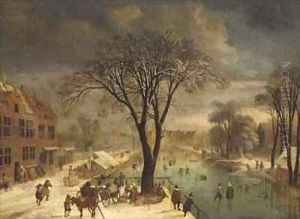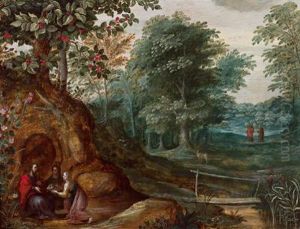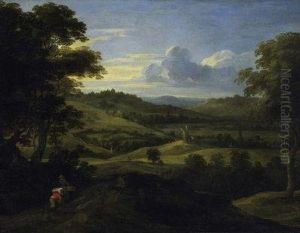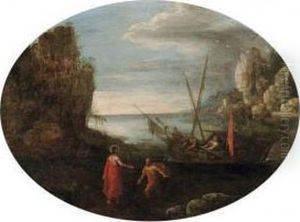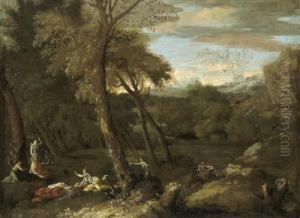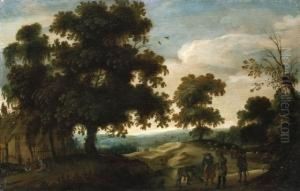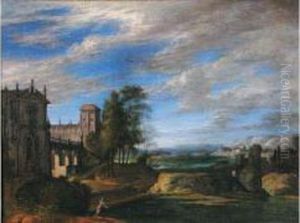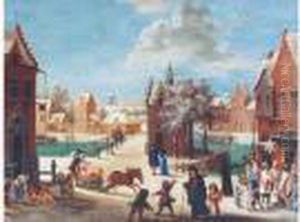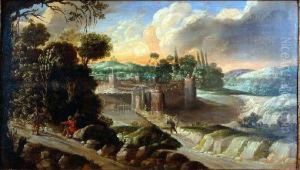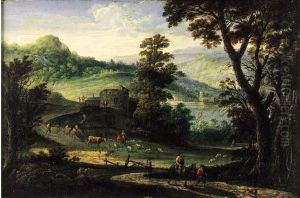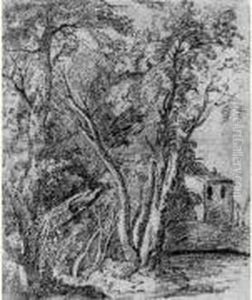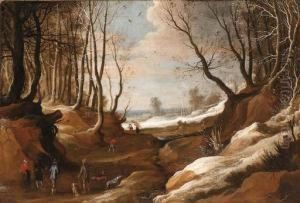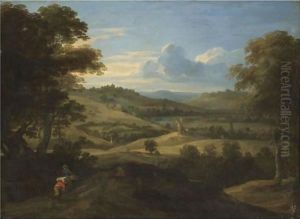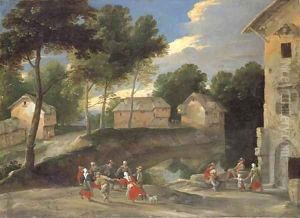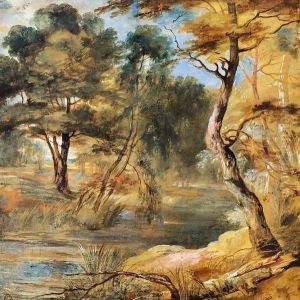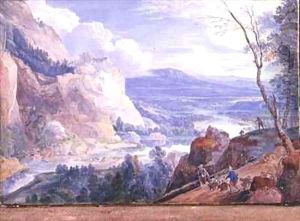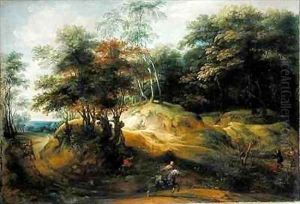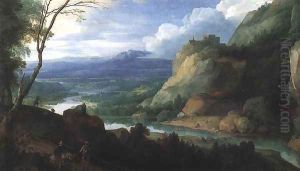Jacques Fouquieres Paintings
Jacques Fouquières, or Fouquieres, was a Flemish Baroque landscape painter who played a significant role in the development of landscape painting in the 17th century. Born around 1580 in Antwerp, which was then part of the Spanish Netherlands, Fouquières was a member of a family of artists, though not much is known about his early life and training.
His works are characterized by their detailed depiction of nature and the countryside, often incorporating classical ruins and pastoral figures to create idyllic scenes that were popular among collectors of the time. Fouquières's landscapes are noted for their realism and attention to the changing effects of light and atmosphere, showing the influence of earlier Flemish landscape painters as well as Italianate elements, which he may have absorbed through his travels or through the works of other artists in Antwerp.
Fouquières spent a significant part of his career in Paris, where he worked for the French court and became a painter to King Louis XIII. His landscapes found favor with French aristocracy, and he was instrumental in introducing the Flemish style of landscape painting to France. Despite his success, there are reports that he died in poverty in Paris in 1659.
Unfortunately, Jacques Fouquières did not leave behind a large body of work, and his paintings were sometimes confused with those of other artists of his time. However, the landscapes that have been attributed to him continue to be appreciated for their quiet beauty and technical skill. His influence extended to other artists, and he is often cited as playing a part in the development of French landscape painting in the 17th century.
